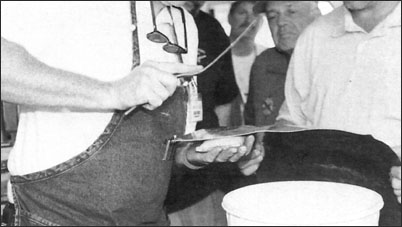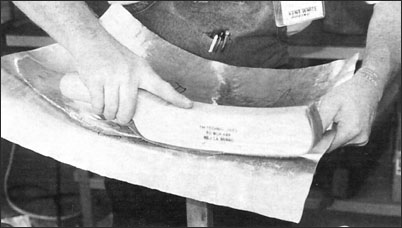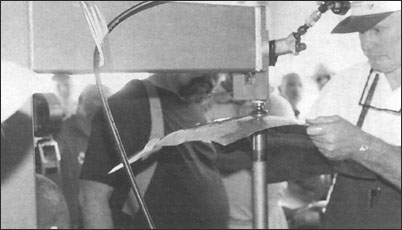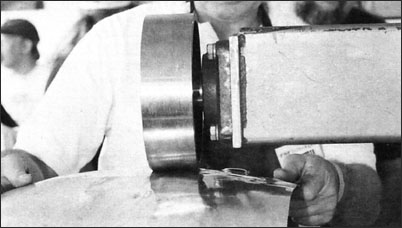The Fine Art of Metal Shaping Part 4
 |
White is using a
slapper
and small,
handheld sand bag
to gently work undulations out of a sheet of aluminum. When we watch auto body men at work, we have to keep
in mind the fact that steel is harder than aluminum and thus tends more to resist marring from
rough-faced tools. The key to doing good aluminum forming work is to use very smooth-faced tools. Just
as an artist uses a variety of brushes when doing a painting, those doing hand-shaping of sheet metal
use a variety of tools and constantly switch from one to another to get desired results.
 |
A
whapper
is being used to smooth down a piece of work that is resting on a 12-inch-long round stake. The portion of
this sheet of aluminum that's beneath the whapper gives you an idea of how this kind of tooling could be
used to shape something such as a wing root fairing.
 |
The
air hammer
does fast work but it's not done as smoothly as is possible with the English wheel. It's common for a
skilled aluminum worker to switch from one of these machines to the other to get the desired results.
Note that White is not wearing protective gloves. When work is started on a freshly-cut sheet of
aluminum, its edges can be run through the rollers of an English wheel to press down and thus round off
sharp edges.
 |
You can see how the combination of high and steadily applied pressure of English wheel rollers smooths up surfaces having compound curvature. To help feed work into the rollers, the upper one can be given a spin with the hand. In this picture the metal is being subjected to back and forth movement. It's also possible to feed the work in so that the wheels follow diagonal paths across the sheet to get desired results. It takes practice to learn to use this device effectively.



